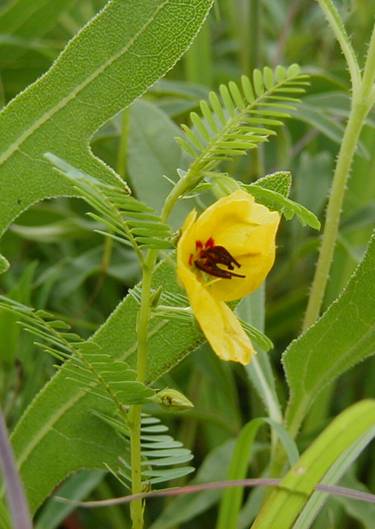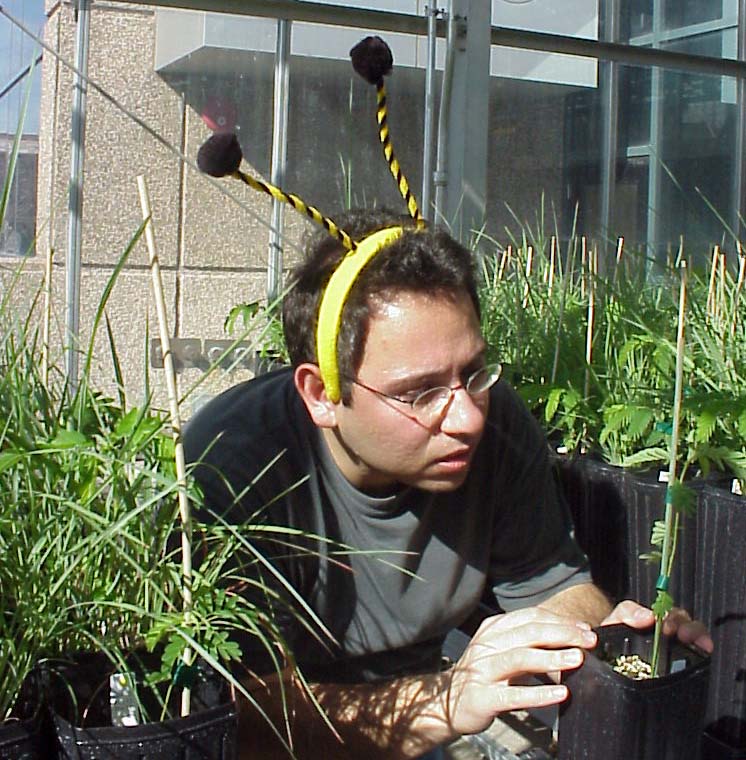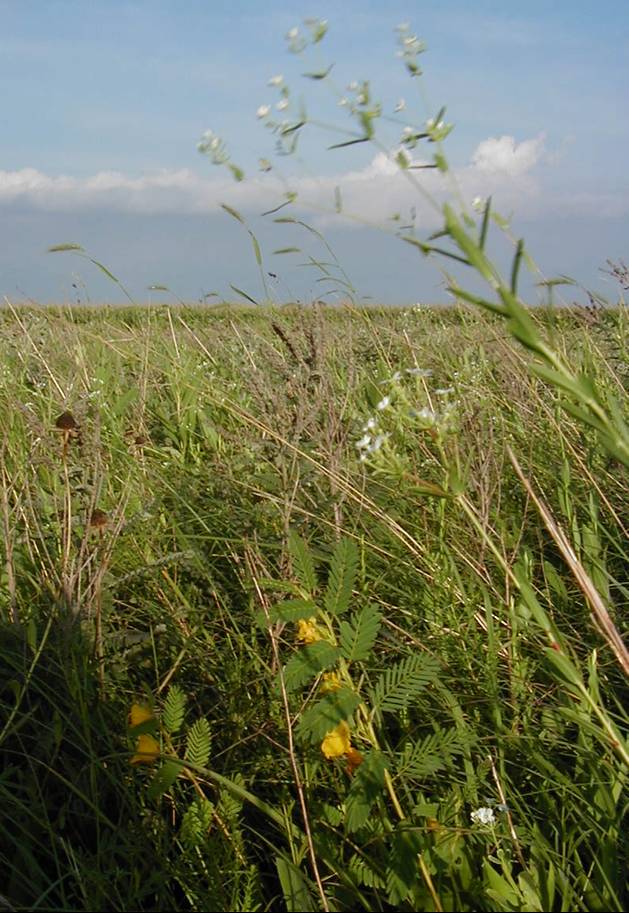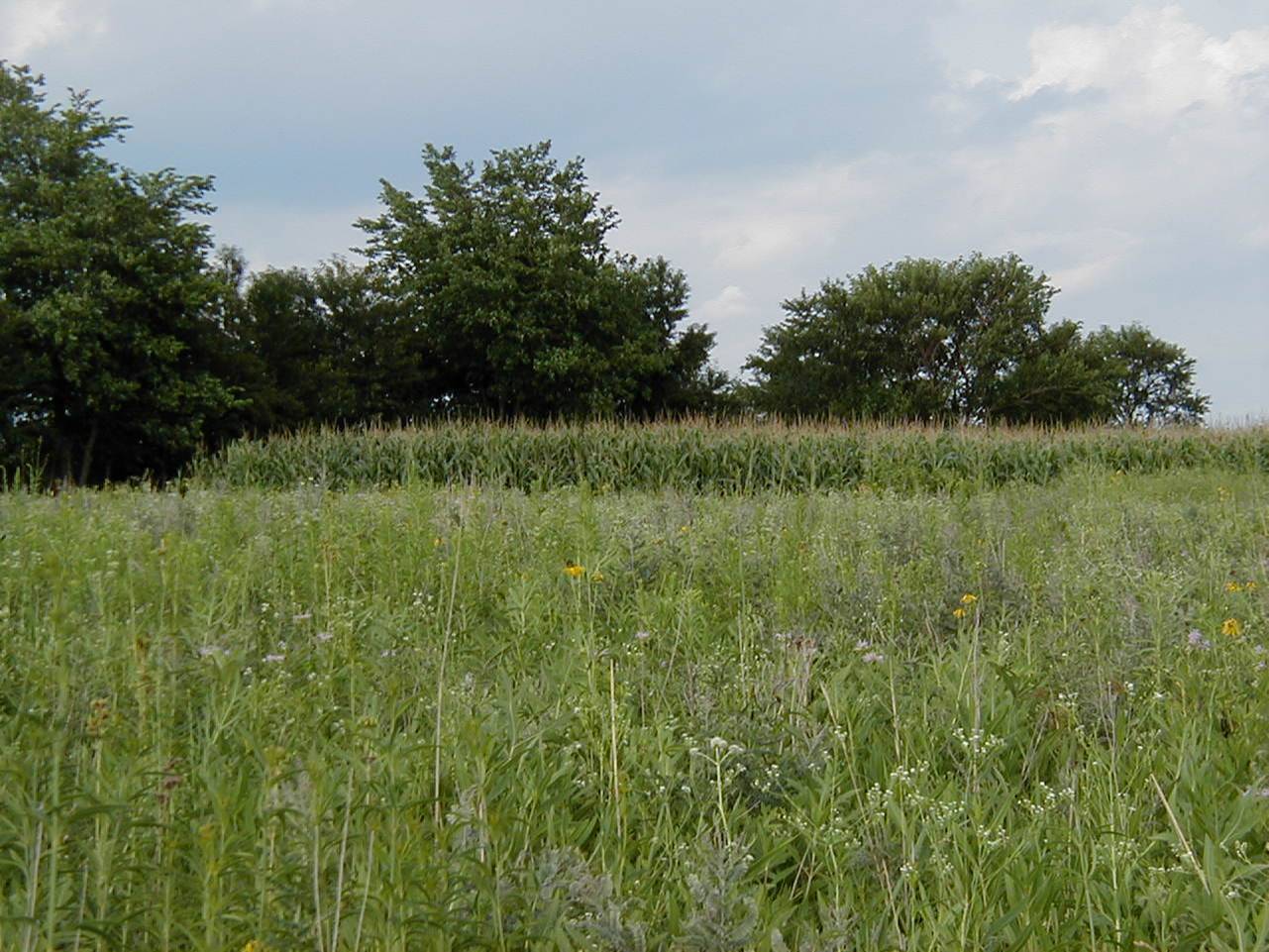Fragmentation of Prairies
Consequences for Genetic Quality and Quantity in
Chamaecrista fasciculata
 Prairies
once covered most of the state, but surprisingly the consequences of isolation
of the species in the prairies have not been studied. During the past several
years we have begun several projects that will begin to address this issue.
Prairies
once covered most of the state, but surprisingly the consequences of isolation
of the species in the prairies have not been studied. During the past several
years we have begun several projects that will begin to address this issue.
In collaboration with Christiana Scholz (visiting student from Germany), we determined the prevalence of genetic load through a competition experiment. For this study we used Chamaecrista fasciculata (partridge pea), a species native to sand prairies. This experiment did not find any consistent difference in the relative success of the plants from small isolated prairies compared to plants from large prairies .
 This
research was furthered by Constantinos Mannourisí masterís thesis projects (the
busy bee - pictured above) . His research tested whether genetic quality and
quantity declined in the populations in small fragments (where populations are
smaller and more isolated) then larger prairie fragments. His research project
was unique in that it was one of the first studies to compare genetic diversity
of traits that directly influence success of the species in the natural
communities. Overall, his research found limited evidence of a decline in
genetic quality (plants from the smaller populations were smaller) but quantity
of genetic diversity did not decline in the smaller populations.
This
research was furthered by Constantinos Mannourisí masterís thesis projects (the
busy bee - pictured above) . His research tested whether genetic quality and
quantity declined in the populations in small fragments (where populations are
smaller and more isolated) then larger prairie fragments. His research project
was unique in that it was one of the first studies to compare genetic diversity
of traits that directly influence success of the species in the natural
communities. Overall, his research found limited evidence of a decline in
genetic quality (plants from the smaller populations were smaller) but quantity
of genetic diversity did not decline in the smaller populations.

